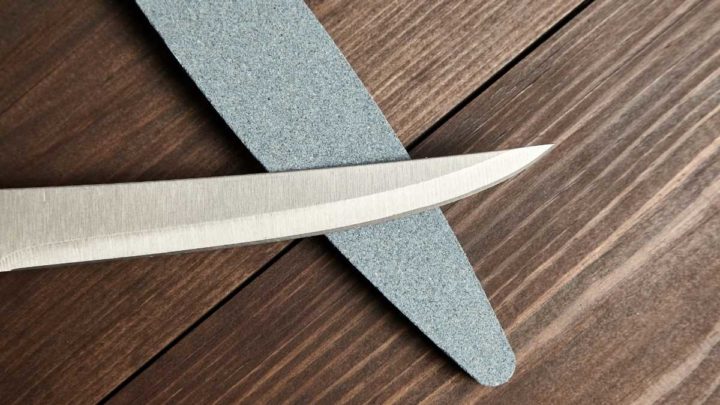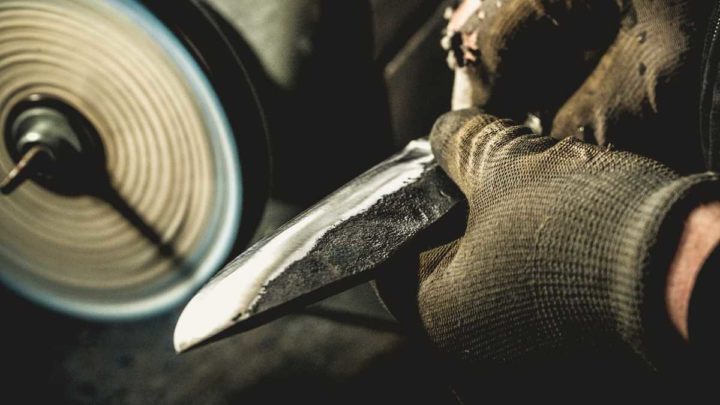How to polish a knife – the basics and top tips.
Polishing knives is an arts and crafts skill that many people have. But even as a skill, polishing knives can be difficult. This is why some people choose not to do it themselves. Instead, they buy a knife with a blade that has been already polished or they hire someone to do it for them. Slicing every ingredient using a rusty or dull knife can be the worst thing to do in the kitchen. But more than following proper storage and maintenance, there are other essential things that you should do to polish a knife.
We will take a look at some of the things that are available for people wanting to polish their knives. Some of these things are for DIYers while others are for professional knife polishers who offer their services to the public.
In this post, we will teach you things that will surely help you in getting your cleaning job done fast and easy such as:
- How to polish a knife
- How to mirror polish a knife
- How to polish a knife blade by hand
- How to polish a knife blade with a Dremel
- How to polish a knife blades’ scratches
How to Polish a Knife
Whether you have a pocket knife, vintage knives, hunting knife, or just a kitchen knife, we have the essential tips for you on how to polish an entire knife. You can also use this to polish and clean your Chinese meat cleaver.
If you have a versatile knife like the Santoku knife – then again this method will look after it and keep it polished and shiny.
Follow these tips below:
1. Clean
The first step is always going to be washing the knife and drying it off with either a dish towel or by wiping it with a polishing cloth. You can also use a damp cloth for this, but you want the knife as dry as possible before you start using it again. If there are any marks on the blade of the knife, use mild soap and warm water, an abrasive scrubbing pad or toothpaste for some serious scrubbing power.(Some folks love baking soda for a buffing compound and take it off with a cotton swab) Rinse thoroughly after each cleaning step and dry completely before using again.
Cleaning your knife is a great way to ensure that you are not doing harm to yourself – who wants to eat off a rusty knife. It’s also just the right thing to do in order to keep your kitchen clean.
If you are not using your special chef’s knife for a long time you can rinse in warm water and lemon juice – then with a cotton swab coating it with penetrating oil will stop corrosion

2. Take Off the Rust
To do this, you will either need a store-bought rust remover or make your own.
Using Store-bought Rust Remover
Here are the steps on how to use a store-bought dust remover:
1. Prepare the rust remover for knives.
2. Put a generous amount of layer on its blades.
3. Cover the knife with a clean rag or cloth. The rust will eventually be penetrated by the solution.
4. You can use any kind of oil such as WD-40, kerosene, Vaseline, or Autosol, but it’s important to note that it’s not the only one you can use.
5. The blade should be removed with the rag.
6. If you want to completely get rid of any type of rust, you have to prepare an additional abrasive cloth or even steel wool.
8. If you have a lot of oil or dirt, use a clean polishing cloth to remove it.
Using Homemade Rust Remover
If using a homemade rust remover for a knife will be convenient for you, then follow these steps:
1. To make a thick paste, mix a moderate amount of baking soda and water.
2. If you want to cover all the rusted areas, apply the solution first.
3. Begin scrubbing the blade by taking an old toothbrush. Take note: it is a good idea to perform gentle yet circular strokes.
4. The knife should be cleaned with soapy water after the rust has been wiped out.
5.Make sure to rinse it with clean water again and dry.
6. Mineral oil that is made for polishing knives can be applied to your knife to prevent it from rusting again. The areas that are rusted must be covered before the solution can be applied.
How to Mirror Polish a Knife
Here are the easy steps on polishing a knife with a mirror finish:
1. Prepare flat stones, very fine grit wet/dry paper and, chrome polish on a leather hone.
2. Use the DC + CC stones for more efficiency.
3. Use the diamond side flattening out all the micro hollows and bumps.
4. Use the ceramic sides to remove the larger or coarser grit-made marks of the diamond.
5. You can use the brown ceramic form extra DC stones to have a finer finish than the white CC stones.
6. Wait for the mirror finish to show up and then, dry and wipe it with a paper towel or polishing cloth.
7. Repeat the procedure until you get your desired mirror polish in a knife. Maintain it regularly to have an easier mirror finish if you need it someday.
Note that it is better to use up to 1200P European grit size before honing with chrome polish.
How to Polish a Knife Blade by Hand
Hand-polishing a knife blade can be done for many reasons. One is to remove any nicks or imperfections that might occur during sharpening. Another is to remove scratches or rust that may have accumulated on the blade over time, and a third is to create an aged look.
It’s important to know which way the individual steel grain runs before you start polishing as this will determine how you move your hand and the pressure you apply with your fingers. You can polish a knife blade by hand in about ten minutes if it’s not too rusty or scratched up, but it may take longer if it needs more work.
Water, soap, and paper towels should be used to wet the metal. The next step is to use a steel wool pad to scrub the metal. The result will depend on how long you go over the surface with it. You can keep polishing until you reach your desired look or leave it at a light polishing for now and come back later to add more layers.

How to Polish a Knife Blade With a Dremel
Before anything else, prepare the things that are needed in this process such as:
- Goggles
- Vise
- Dremel
- Mandrel part number 401(Optional)
- Aluminum oxide grinding stone (part number 932)
- Polishing compound part number 421 (Optional)
- 1/2″ felt polishing wheel part number 414 (Optional)
Here are the easy steps that you should do:
1. Attach the knife to the vise. The vise should be tightened to make sure the knife is held securely for sharpening. And make sure to tighten the vise to secure your workbench while sharpening the knife blade. Prevent accidents as much as possible.
2. Install the Dremel to the grinding attachment. Fasten the Dremel properly since the rapid rotation will surely fly off when in a loose condition. To begin sharpening, use the proper angle by sharpening one side of the blade with a 24-degree angle or sharpen both sides of the blade using a 12.5-degree angle. Start at the base of the blade closes to the handle, making sure that it is the most comfortable position for you. Then, move the Dremel along the edge of the knife blade while holding your angle. Also, remember to let the blade cool down before doing the second pass on the other side.
3. To polish your knife blade, use the mandrel, felt pad, and polishing compound for more efficiency. Follow the instructions placed on the polishing compound for better results.
How to Polish a Knife Blades’ Scratches
To polish the knife blades’ scratches, the first thing you need to do is to make sure that the blade is dry. This will allow you to see the scratches more easily and it will also prevent the rubbing compound from being absorbed into the metal. You can use a towel or paper towel to dry off your blade.
Next, you should scrape away any minor surface rust with a sharpening steel or other metal utensils. This can be done by using light pressure and working through the scratches in a circular pattern. After this, you are ready to start polishing your knife blade with an abrasive material like sandpaper or baking soda.
How to Clean a Pocket Knife in Four Simple Ways
When we use a pocket knife, it collects dirt and grime that cannot be seen by the naked eye and can lead to rust. Rust can destroy your knife’s blade so it is important to clean your pocket knife frequently.
The four methods for cleaning a pocket knife are:
1. Soak in warm, soapy water
Make sure that it is warm and not hot or boiling water. Pour warm, soapy water (mild soap only) in a container then dip the knife to soak for about two to three minutes.
2. Use a dish soap
Make sure your dish soap is very mild. Use it along with a cleaning sponge or polishing cloth to make the knife clean.
3. Use a knife cleaning kit
This is one of the best ways that you can clean a knife since a knife cleaning kit comes with a microfiber cloth, knife wax, polish, rifle, knife cleaner, and a gun.
4. Use a wire brush
Use a wire brush that is made with industrial copper, plated steel, and an anti-rusting brush.
What does it mean to polish a knife?
Polishing means doing two key processes –
- cleaning
- Removing the rust.